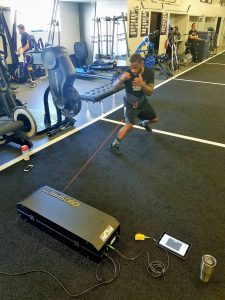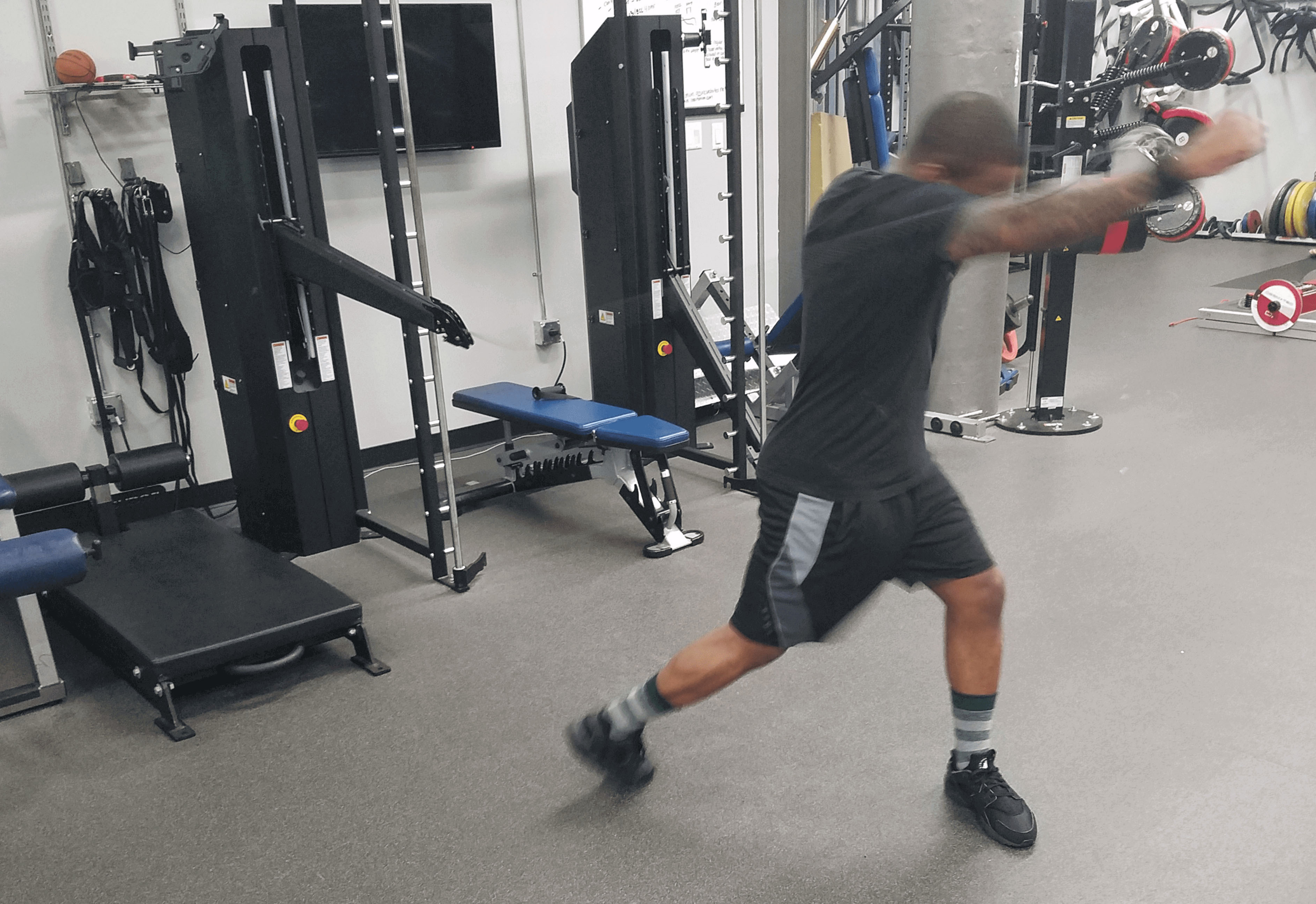DeRick O’Connell is fighting against an outdated stereotype of boxing conditioning. The image of endless jump rope cycles, early morning stair-sprints and occasionally punching sides of beef stubbornly refuses to go away. He is teaching his boxers, his colleagues and anyone who cares about the sport that boxing conditioning warrants the same rigor and respect as any major sport.
O’Connell studied under Cal Dietz at the University of Minnesota. Although he started his professional career working with hockey players at Prentiss Hockey Performance, O’Connell developed an affinity for strength and conditioning in boxing. He recognized that boxing was like many of the Olympic sports he learned with Dietz: the training directly reflects competitive performance.
One such pattern that transfers directly from the gym to the ring is a boxer’s counter-movement retreat and acceleration. O’Connell is using the 1080 Sprint to train and quantify how his boxers “float like a butterfly.” He starts his boxer in a normal orthodox fighting position, i.e., left side of the body forward and the right (dominant) side back. He then sets the boxer through an advance-and-retreat pattern, observing the acceleration as the boxer pushes off of each foot.

From an orthodox stance, boxers move more easily to the left. Moving explosively to the right is more difficult, as the push-off comes from the right. Likewise, movement to the right from a southpaw stance is suboptimal because it derives from the weak-side foot.
Boxers recognize this asymmetry in their opponents as well as themselves. But because the vast majority of fights are between two orthodox fighters, neither are in a position to exploit the asymmetry.
O’Connell aims to minimize – if not eliminate – the movement asymmetry within and between the stances. A symmetric boxer is more versatile, and will induce uncertainty among his opponents. When a boxer can move adeptly in either direction, regardless of stance, he has four equally strong movements.
This limits the opponent’s ability to predict the direction of retreat and advance. As long as the boxer does not fall into a predictable tactical pattern, his opponent will remain unsure of the direction of movement and attack. This precludes the opponent protecting a “safe” side, limiting his range of defensive options.
O’Connell also sees a role for the 1080 in fatigue management and nervous system activation. O’Connell recommends a minimum of two weeks of down-time after a fight before returning an athlete to the gym for recovery training. However, boxers on the lower rungs of the ladder often fight with very little recovery time and even less advance notice. Turning down an offer to fight limits their ability to climb the ranks and their financial earnings. They often go into a pre-fight training cycle on fewer than four weeks of recovery training.
Coaches can use the 1080 to monitor reaction time, rate of force development and rate of decline in these measures to assess fatigue and nervous system readiness. Shadow-boxing and cone drills are boxing-specific activities that can test or stimulate nervous system activation.
[av_button_big label=’Measuring lateral movement in ice hockey goalies’ description_pos=’below’ link=’manually,http://1080motion.com/measuring-lateral-movement-ice-hockey-goalies-1080-sprint-university-guelph/’ link_target=” icon_select=’no’ icon=’ue800′ font=’entypo-fontello’ custom_font=’#ffffff’ color=’theme-color’ custom_bg=’#444444′ color_hover=’theme-color-subtle’ custom_bg_hover=’#444444′ av_uid=’av-2ng4nx’][/av_button_big]
O’Connell foresees a rapid acceleration in the sophistication of strength and conditioning for boxing and other combat sports. He points to the UFC’s recently-opened Performance Institute as a bell-weather of a new focus on science, technology and nutrition to prepare fighters. As the results of those investments become clear in athlete performance, fighters at all levels will raise their expectations for their training environments.






























































